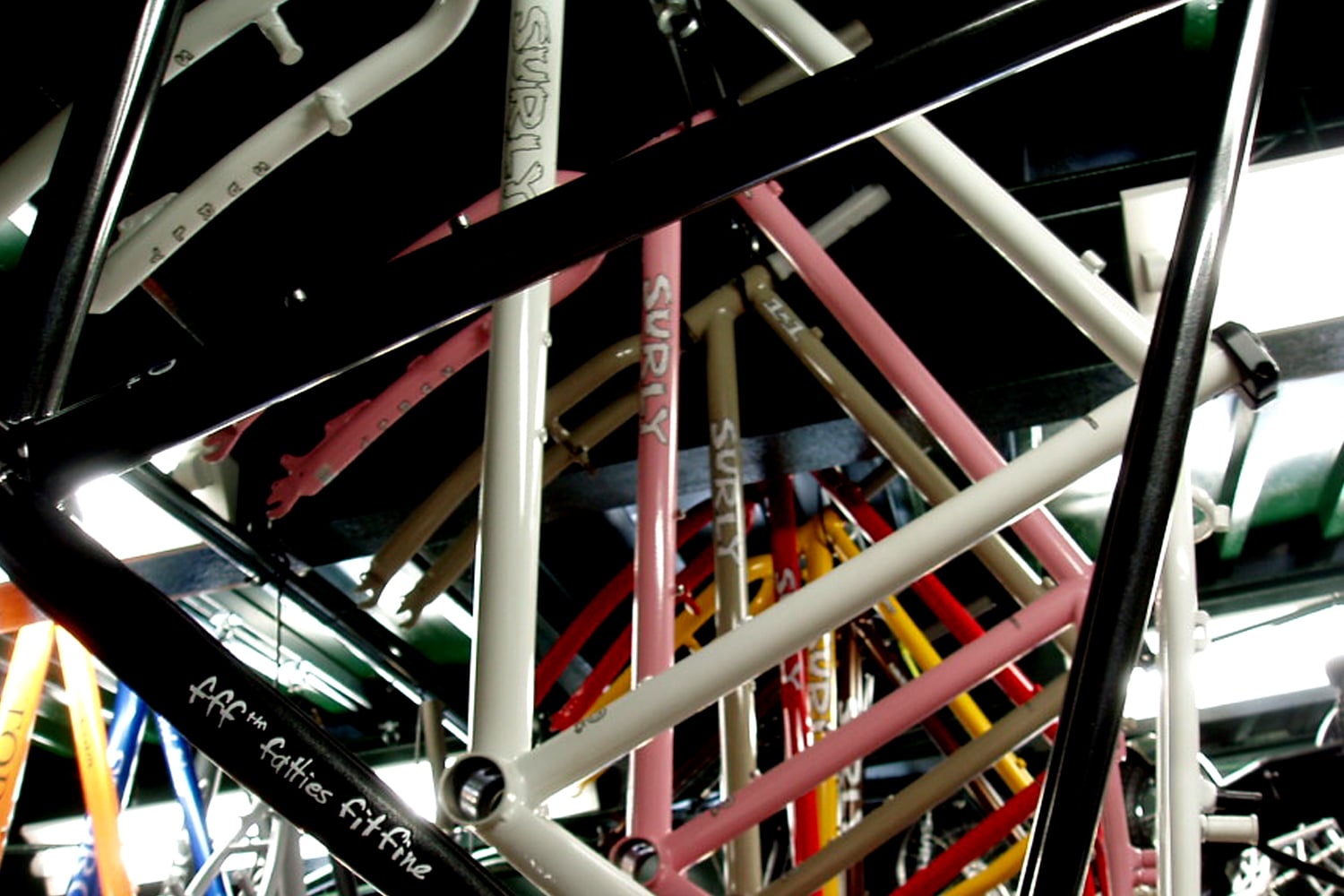Surly Bike Fit
One of the most controversial and confusing aspects of cycling is bicycle fit and sizing. We here at Surly receive tons of e-mails and phone calls from folks all wanting to know the same thing: what size should I ride?
Let’s get something clear, sizing a bike is hard. Each person in the world is shaped differently. Some folks are long-torsoed with stubby arms and skinny legs. Some are squat round people with knuckles that drag. There are enormous Andre the Giant types and normal people too (whatever that means.) There is no one bike, one bike model, or one bike brand that will fit everyone (without being fully custom built - which ours are not), but you can usually get close.
Go to a bike shop
The first thing we ALWAYS recommend to people wanting to find the right size Surly is to consult with your favorite bike shop. A good shop with great customer service will be happy to help you fit yourself to a road bike, a touring bike, a single-speed mountain bike, or whatever you want.
Shops have lots of different methods for doing this. If they have you throw your leg over one bike, declare that bike perfect for you, and insist you buy it, then maybe they’re not doing all they can. An increasing number of shops can schedule time with you to scientifically dial in your fit down to millimeters of saddle height, stem reach, frame angle and fork rake. Most use a method somewhere in between science and guessing. It should be pointed out that there are many theories of ‘proper fit,’ and while most result in similar end results, there is not one absolute correct answer.
Many shops will charge you for this service and that’s not a bad thing. Some will size you up for a fee and then give you that fee (or a percentage of it) as a discount if you choose to buy your new bike from them. Even if they don’t give you this deal, it’s still a really good thing to have some numbers when shopping for a new bike. It’s generally worth it.
In a perfect world you’d be able to go down to that same great shop and test ride a Surly. Unfortunately, we’re still pretty small in the grand scheme of things, and that means you won’t often be able to do this. Much of our stuff is special ordered and doesn’t hang around waiting for you to test ride. Do not despair! Multitudes of happy Surly riders have ordered up their frameset with a shop’s help and have been extremely happy with the outcome.
So how do I get the right size?
Effective top tube length is key.
If you have a bike that works for you, measure the effective top tube length. Having this number allows you to compare frames from different manufacturers and bikes built for different purposes. This is done by measuring from the center of the head tube (where the top tube joins it); horizontally back to the center of the seat post. (see the diagram)
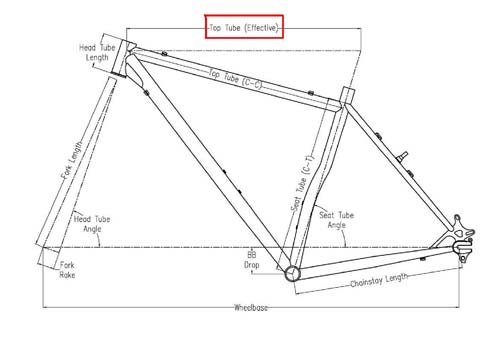
Many frames have a slight (or pronounced) slope to the top tube, so to get a measurement that you can use to compare different bikes, the effective top tube length is what we’re after. Getting the length right on your frame is going to get you a lot closer to the elusive perfect fit than seat tube length or “frame size.”
Since the frame size can be kind of misleading, we have people compare their current bike to our geometry charts on the various bike pages on our website.
Standover height
Once you get a good number for the length of the frame, you’re going to want to make sure you can straddle the thing flat footed (because the alternative is bad news.) So, look at the geometry charts again and find the frame size that fits you best in length as described above. Now look at standover height (or S.O. Height”). This is the measurement from the top tube to the ground (assuming a certain tire size which is listed.) This measurement is taken at the mid-point of the top tube halfway between the seat tube and the head tube because that’s where you usually end up when you stand over your frame.
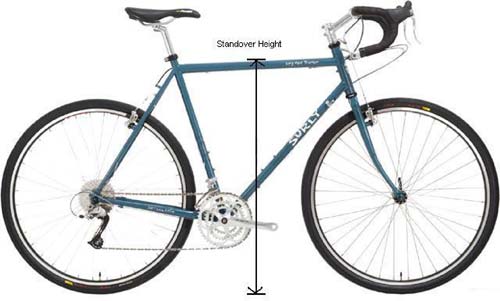
To see if you have enough standover, measure your true inseam. This can be done by jamming a book up into your crotchular area and measuring (in stocking feet) from the spine of the book (wedged up against your pubic bone) to the ground. Don’t use your pants inseam that is chronically inaccurate.
If your inseam measurement clears the frame’s standover by a bit (say at least 2-3cm for a road bike and a bit more for a mountain bike) then you should be ok.
There, you’ve got a frame that should fit pretty close.
But what if I don’t have a bike that fits me?
If you don’t currently have something that works for you, your best bet is to go back a few paragraphs and visit your local bike shop. Their main goal is to get you a bike that fits. They’ll use their magic, or their Fit Kit, or their in-house designed system, their Serotta FitCycle, or they’ll have Aunt Betty eyeball you. Whatever they do, if they’ve been in business for a while it must be working.
It’s very very hard for us to tell you what size Surly frame is best for you even if you have a bunch of measurements at the ready. That’s because we are not in the same room with you. We would hate to have you tell us that you’re 5’10” and promise that a particular frame will fit only to have it not fit because you’re 5’10” with extremely long legs. We have not found a fit method that works better than you going to a bike shop. Besides, we’re just going to ask for and look at the same numbers we just discussed.
“Frame Size”
Frame size generally refers to frame height, the length of the seat tube from the bottom bracket (crank bearing) to the top tube. There is a problem with this. That problem is that it tells you only a little about how the bike will fit you.
Long ago, bicycles were all shaped pretty much the same. That’s not true anymore. Also, frames are measured differently. Some companies measure from the center of the bottom bracket to the center of the top tube/seat tube junction. (also known as C-C) That’s a pretty good way of doing things, but doesn’t really take into account differences in tubing diameter which would make a steel 54cm bike “shorter” than an aluminum 54cm since aluminum tubes tend to larger in diameter.
Other frame manufacturers measure from the center of the bottom bracket to the top of the seat tube like the point where you actually insert the seat post. (Call it C-T) This baffles us because if two frames had the exact same geometries and tube lengths, but one had more material sticking up above the top tube, the frame would be “larger” even though it would ride the same as its “smaller” compadre. Weird.
We measure our frames from the center of the bottom bracket to the top of the seat tube/top tube junction. (Uh oh, call this one
C-T too) This gives you at least some small idea of how big the frame will seem, but in no way gives you the whole picture.
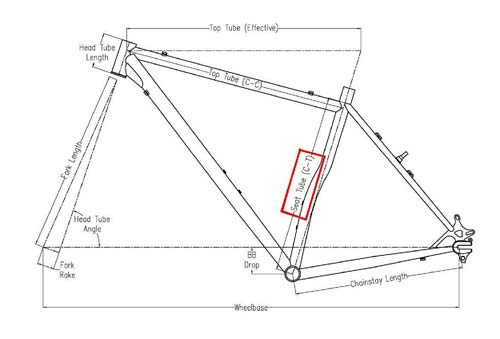
None of these methods is perfect, but all three of them are widely used. So, try to be aware of exactly what’s being measured when you’re shopping.
Personal Preference
To further complicate things, how you like to ride is going to inform your size choice. If you’re going to be really nailing it off road, you’re going to need more standover and a more aggressive position with lower handlebars. If you’re touring, you’ll want a little more upright position comfort will win over performance. If you’re commuting, you’ll likely want some of both. Maybe you’re old like us and a somewhat more upright position is what your back is asking for.
Also, what components do you plan to use? Are you setting up a flat-bar fixie? Are you going to have a drop-bar road bike? Will you have a seatpost with some setback, or fenders that require a little more toe clearance?
The point here is that how you ride and what you want to do with your bike are things your shop can take into consideration when figuring out your frame size, your stem length and rise, and all kinds of other things. The refrain: bike shops are good.
Here’s a true life example to illustrate: Andy rides a 20” 1x1. Dave rides an 18” 1x1. Either could ride the other frame size based on standover and even effective top tube, but each prefers the feel of their chosen size.
Eccentricities of fit
There are many features of any given bike frame that may make it fit differently than another. A good example of this is bottom bracket drop. The relative position of the bottom bracket in a frame’s geometry will affect the sizing considerably. Touring bikes have lower bottom brackets than track bikes one gives you comfort and stability, the other ensures you don’t slap a pedal on 44 degree banking. Think about it; if two bikes are both 52cm frames (and they’re both measured in the same way say center to center) but one has a higher bottom bracket the top tube on that frame will be higher off the ground. The spot you’re measuring from is not fixed it changes from bike to bike.
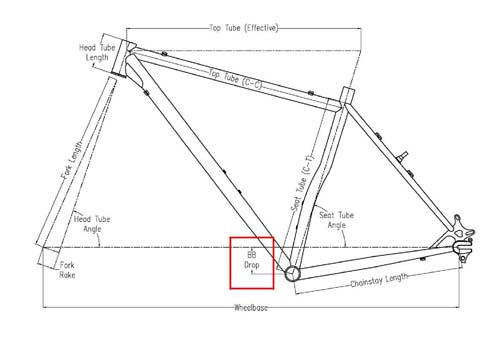
The classic example of this is a cyclocross bike. Our Cross-checks (and most ‘cross bikes) have a higher-than-road bike bottom bracket for riding them off-road. That means a 54cm Cross-check is going to be “taller” than a 54cm Pacer (our road frame). People generally ride a size smaller cyclocross bike than their road bike.
In conclusion
What you can take away from our fit advice is this: just because you ride a 17” mountain bike now does not mean that every 17” mountain bike in the world will fit you. And on top of that, there is no way that we can promise you that one of our frames will fit you exactly given any amount of measurements. People’s bodies are just too varied to do this. What people generally do is get it close enough. Stem lengths and angles, saddle position, crank length, and many other variables can be used to dial your fit.
The last word is always this work with a bike shop. They can help you because you’re in the room with them. Use their knowledge to get you a bike that fits and that you dig riding. That’s what they do best.
 Surly Bikes
Surly Bikes